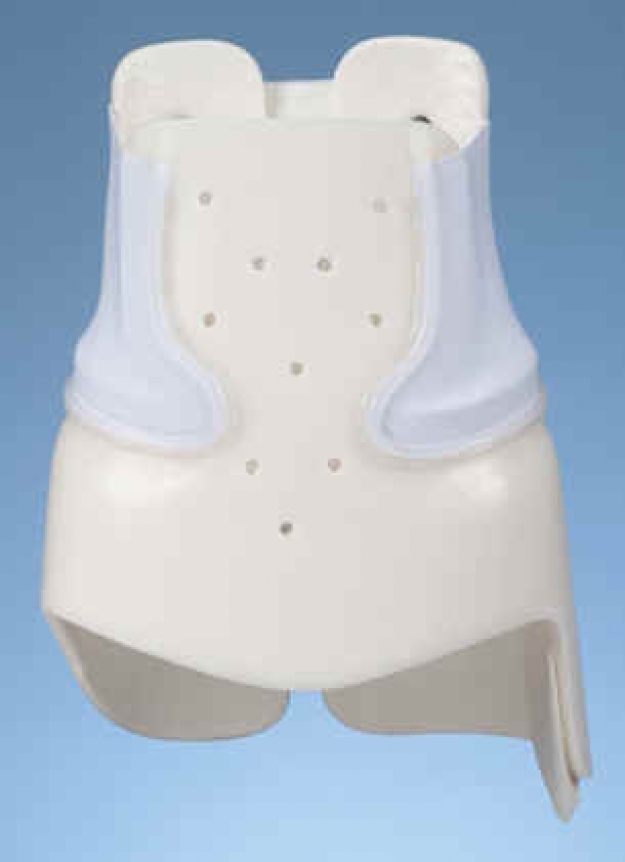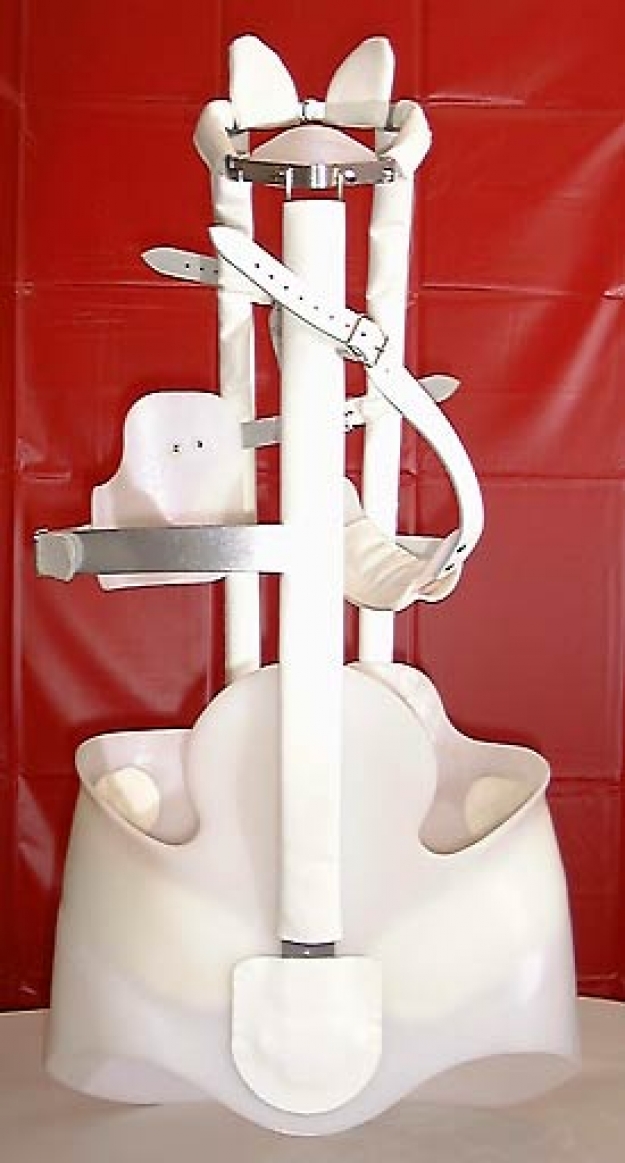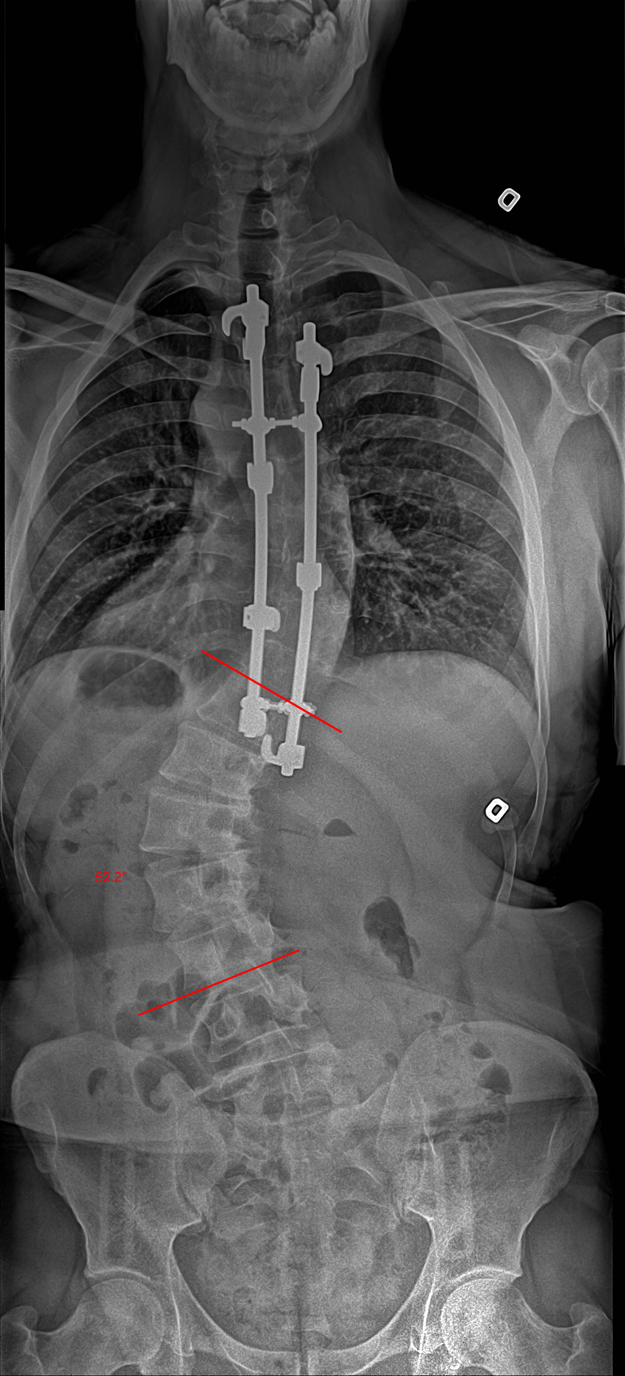Traditional orthopedic treatment
Although most spinal deformities (scoliosis, hyperkyphosis, spondylolisthesis) are mild and require only careful monitoring to make sure that they do not progress, patients with deformities that do progress significantly must consider orthopedic treatment.
Traditionally in medicine, there are two treatment options for spinal deformities, with the appropriate treatment being chosen according to the severity of the curve and the risk of progression. However, the two treatment options that are most often recommended in orthopedics are not without their downsides.
When a patient with a spinal deformity is experiencing significant pain, the recommended treatment is to rest and take anti-inflammatory and/or pain relief medications. This may accompany stabilizing physiotherapy involving postural re-education. In some cases, cortisone injections can be used to relieve pain.
 |
 |
Rigid bracesThe standard treatment method for young patients suffering from progressive spinal deformities is rigid bracing. The goal of the rigid brace is not to correct the abnormal curvature, but rather to stop the progression of the deformity. In addition, the brace limits the patient's movements, is unsightly, restricts clothing choice, induces perspiration, and can cause skin lesions at contact points. It goes without saying that a rigid brace may have a psychological impact, which is not a negligible effect at an age where identity and self-discovery are of primary importance. Finally, the results of wearing a rigid brace are disappointing. For these reasons, rigid braces are almost never used by adults.
|
|
Boston brace |
Milwaukee brace |
SurgerySurgical intervention (spondylodesis) is reserved for severe and advanced scoliosis and kyphosis cases where the curvature (Cobb angle) is measured at more than 50° or 60°. The surgery fuses the vertebrae together using a rigid bone graft, stabilizing the area with metal screws and rods. Like rigid bracing, the goal of the surgery is to prevent the deformity from progressing. However, too often, patients decide to go under the knife hoping to reduce their spinal deformity for esthetic reasons rather than medical ones.(36, 65) As for all surgeries, a spondylodesis carries risks of infection and hemorrhage, but more specifically, this surgery carries the risk of neurological lesion due to the proximity of the spine to the nerves. |
 |
 |
|
The metal rods used to stabilize vertebral fusion in a scoliosis patient are visible in this x-ray. |
||
For more disabling cases of ligament instability (spondylolisthesis and lateral listhesis), and only when medical treatment has proven to be ineffective, spondylodesis is also considered as an option.






